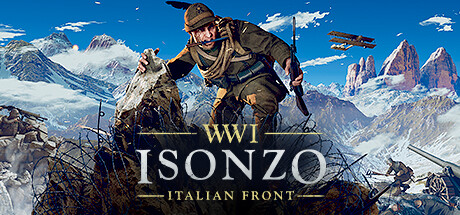- Snow goggles are back!
- Fixed player getting out of bounds errors while in the playable area
- Fixed players sometimes being invisible to other players while using a mortar or field gun
- Fixed gore models hovering in player view
- Fixed some cases where it was possible to bypass weapon limitations
- Fixed showing wrong profile picture when clicking on a player in the scoreboard
- Stability and crashing fixes
- Performance improvements
One minor known issue is that the news section on the home page will incorrectly display an old blog after launching the game. This is fixed whenever you open any other screen and go back to home again.
Many thanks to everyone who has submitted bug reports, it really helps us identify and track down issues like the ones fixed with this update!

New Campaign Event in Verdun & Tannenberg
From today until next Friday 24th, the Second Battle of the Aisne Campaign will be running in Verdun and Tannenberg. Will the Entente or the Central Powers emerge victorious in this epic battle of attrition?
What is a campaign event?
For those who haven’t fought before, our campaign events are special multi-front battles in Verdun and Tannenberg, where every kill is tallied up, and the side which manages to lose the least troops wins. You can earn a medal for participating in the campaign, with a shinier medal for fighting on multiple fronts. The Second Battle of the Aisne Campaign will run from Friday May 17 and end on Friday May 24.

The Second Battle of the Aisne
French General Nivelle planned the Second Battle of the Aisne as a breakthrough offensive for early 1917, following the major battles of Verdun and the Somme in 1916. He expected the German Army to be exhausted. His vision was for a decisive victory in 48 hours, and he put his reputation on the line by threatening to resign if the offensive wasn't approved.
It involved a massive coordination of troops, starting with British attacks towards Arras, then French forces beginning their assault further south in the direction of the Aisne river. Ultimately the battle was not a clear defeat for the French, but Nivelle's grandiose claims about achieving a decisive victory made it feel like that for the soldiers suffering massive casualties in the battle. Morale fell throughout the French Army, with units starting to mutiny - often taking the form of holding a defensive position but refusing any orders to attack. Desertions also increased.
Nivelle was fired and replaced with General Pétain, who moved quickly to stamp out mutinous sentiment with a combination of carrot and stick - though mostly carrot. A small number of soldiers were shot for mutiny, but he mostly put effort into improving food, providing better equipment, increasing pay, and allowing for more leave. This worked, and the morale crisis was defused.

Interestingly, there is some debate as to when the Second Battle of the Aisne officially ended. While mid-May is commonly taken as the end point for it (along with the wider Nivelle Offensive itself), some historians have argued that the Battle of La Malmaison in October 1917 should be considered part of the battle as well, since it built on ground captured during the action in April-May. That would matter because the Battle of La Malmaison was actually a clear victory for the French - credit for which should partially go to Nivelle, if considered part of the Nivelle Offensive.
Another Battle of the Isonzo
Under pressure from France, Italy would launch a new offensive in mid-May to try and build pressure on the Central Powers. Italian Chief of Staff Luigi Cadorna obliged with... the Tenth Battle of the Isonzo. In fairness, this was not entirely Cadorna's choice, with the idea of an offensive along the river suggested by the French. He attempted to change tactics, aiming for an advance across a broader 40km front in contrast to the smaller, shorter actions planned with the previous three Battles of the Isonzo.

Artwork portraying battle between Italian and Austro-Hungarian soldiers in an earlier battle.
Where the Second Battle of the Aisne was a mixed bag in terms of results, the Tenth Battle of the Isonzo was a clear Austro-Hungarian victory. Key objectives were not achieved, and an Austro-Hungarian counter-offensive (launched even before the Italians had ceased their own attacks) would recapture almost all the lost territory. The whole operation was a devastating blow to Italian morale. Cadorna knew something needed to be done. His solution: the Eleventh Battle of the Isonzo, to be launched a few months later, with the greatest concentration of force yet seen. You can probably imagine roughly how that went.
Quiet on the Eastern Front
In the East, the Russians were no longer fighting under a Tsar - the February revolution had dethroned Tsar Nicholas II, and since March 2 the country was governed by the Russian Provisional Government. There would be no grand Russian offensive until the Kerensky Offensive in June, intended to knock Austria-Hungary out of the war. Instead it would effectively break the back of the Russian Army. But that's a story for another time.
However, it wasn't all revolution and disaster in the East. The Romanians successfully fought off a major German - Austro-Hungarian offensive from July to September, halting the Central Powers advance and inflicting heavy casualties.
If you want to join the campaign, just hop into Verdun or Tannenberg and play some Frontlines or Maneuver battles.
Good luck out there soldiers!
We hope your Officers are better leaders than Cadorna...
